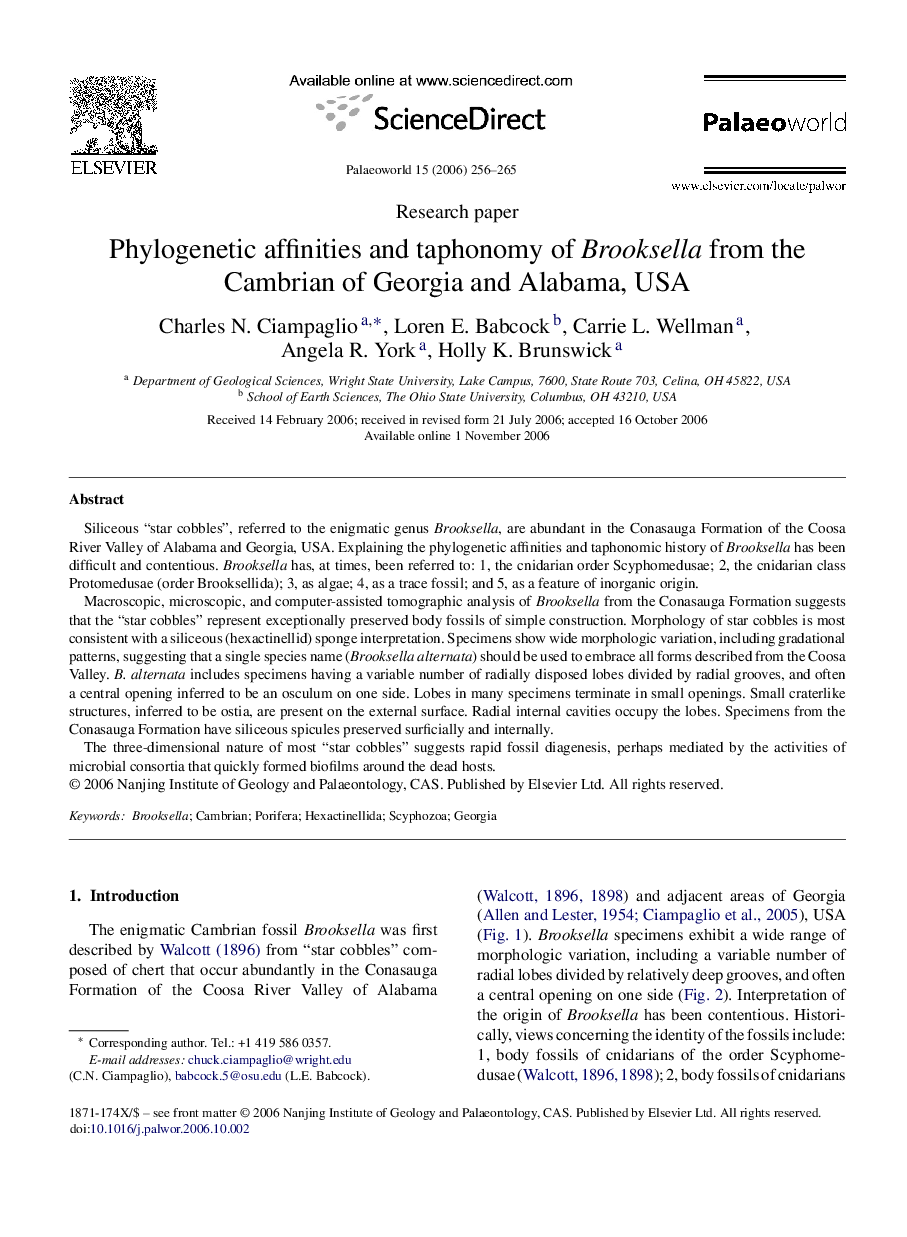| کد مقاله | کد نشریه | سال انتشار | مقاله انگلیسی | نسخه تمام متن |
|---|---|---|---|---|
| 4749861 | 1642287 | 2006 | 10 صفحه PDF | دانلود رایگان |

Siliceous “star cobbles”, referred to the enigmatic genus Brooksella, are abundant in the Conasauga Formation of the Coosa River Valley of Alabama and Georgia, USA. Explaining the phylogenetic affinities and taphonomic history of Brooksella has been difficult and contentious. Brooksella has, at times, been referred to: 1, the cnidarian order Scyphomedusae; 2, the cnidarian class Protomedusae (order Brooksellida); 3, as algae; 4, as a trace fossil; and 5, as a feature of inorganic origin.Macroscopic, microscopic, and computer-assisted tomographic analysis of Brooksella from the Conasauga Formation suggests that the “star cobbles” represent exceptionally preserved body fossils of simple construction. Morphology of star cobbles is most consistent with a siliceous (hexactinellid) sponge interpretation. Specimens show wide morphologic variation, including gradational patterns, suggesting that a single species name (Brooksella alternata) should be used to embrace all forms described from the Coosa Valley. B. alternata includes specimens having a variable number of radially disposed lobes divided by radial grooves, and often a central opening inferred to be an osculum on one side. Lobes in many specimens terminate in small openings. Small craterlike structures, inferred to be ostia, are present on the external surface. Radial internal cavities occupy the lobes. Specimens from the Conasauga Formation have siliceous spicules preserved surficially and internally.The three-dimensional nature of most “star cobbles” suggests rapid fossil diagenesis, perhaps mediated by the activities of microbial consortia that quickly formed biofilms around the dead hosts.
Journal: Palaeoworld - Volume 15, Issues 3–4, August–November 2006, Pages 256–265